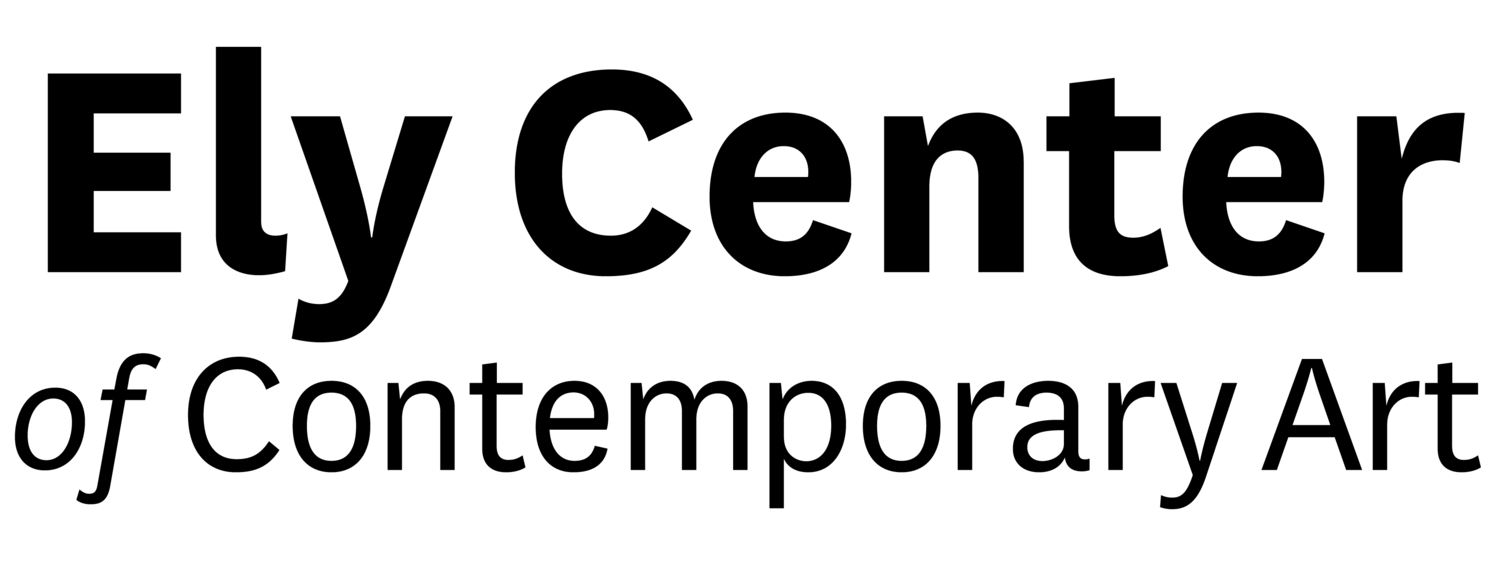Mirror Blind, Acrylic mirror, plywood, 48” x 48” x 48”, 2013
Curator’s Statement by Maxim Schmidt
Brooks Dierdorff’s work highlights the complex, contradictory, and sometimes haunting facets of hunting and the wide variety of cultural practices from which it is constructed. Dierdorff does not shy away from examining both the distances between man and nature and the way the two fold into one another. Images of hoisted leopards and coyotes, lifelessly still objects, are juxtaposed against the performative deflating of a deer bust balloon, both lending attention the objectification of animal bodies, namely in trophy culture. Animal bodies become props, and thus metaphors for both the extinguishing of life as well as highlighting a sense of superiority and dominance put forth by hunters - as well as mankind collectiely. Dierdorff further expands on conflicts of perspective and reality in incorporating images of animal furs and bodies in installations loosely reconstructing the visual spectrum of the species hunted, or wedging such prints alongside the weaponry of arrows or bullets. Brooks Dierdorff expertly explores the shifting, intricate relationship between man and nature, while brilliantly incorporating the slippage between these two seemingly-opposed worlds.
About
Brooks Dierdorff is an artist exploring the ways that photography shapes our ideas of nature, climate disasters, and environmental collapse. His work includes a range of methodologies like photo-based sculptures and installations, video, appropriating images from commercial and archival sources, and environmental grief therapy among others. This expanded photographic practice often explores new ways of seeing - staging encounters with photographs that push against the interpretation of a photograph as an objective document to be passively received, offering instead a sensorial and emotive relationship with photographs.
He has exhibited his work both nationally and internationally at galleries that include Amos Eno in Brooklyn, New York; The Los Angeles Center for Digital Art; The Photographic Center Northwest in Seattle; High Desert Test Sites in Joshua Tree, California; The Orlando Museum of Art; The Midwest Center for Photography in Wichita, Kansas; Johalla Projects in Chicago; the Ulrike Hamm Gallery in Bissendorf, Germany; the Czong Institute for Contemporary Art in South Korea; and The New Gallery in Calgary, Canada.
Dierdorff received his BA from the University of California, San Diego in 2007 and his MFA from the University of Oregon in 2012. Currently he is an Assistant Professor of Photography at the University of Central Florida in Orlando, Florida.
Statement
Hunting can be seen as both the epitome of our oppositional relationship with nature, as well as our communion with it. As a set of cultural practices, it is diverse and often contradictory; some hunters only kill animals that they eat and see it as preferable to industrial farming; others imitating its sounds, smells, or optical processes. In the series Line of Sight, I examine these contradictory encounters between man and the natural world through photography, sculpture, video, and installation. The specific practices through which hunters engage with nature serves as points of departure for considering how humans mediate and construct the natural world. For example, the piece Blind mediate the photographic image through florescent lights - a futile attempt to replicate the visual spectrum of deer. In other works including Remnant, Organizational Principles and Late Season Tactics, photographs of animal furs - fixed to the wall by arrows, suspended between blocks of ballistics gel, or positioned on the floor behind glass - evoke fragments of animal bodies while the viewer’s own body is activated as they examine the image from multiple physical positions. In forging a link between hunting, embodiment, and vision, I seek to foreground the conventions through while nature is framed as well as the slips that exist between perception and reality.
The series Trophy deconstructs the prevailing visual codes within hunting culture by manipulating trophy photographs found online. Erasing the hunter from the image reveals the conventions through which animals are objectified, and heightens the visual rhetoric through which humans attempt to dominate the natural world.

